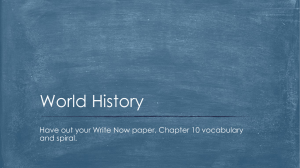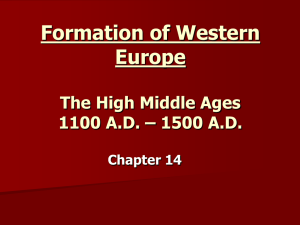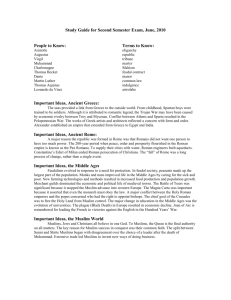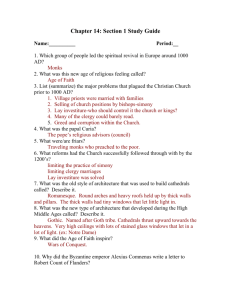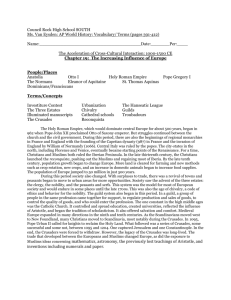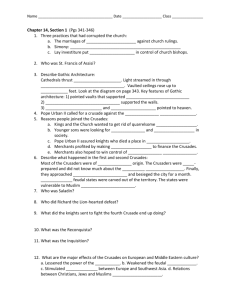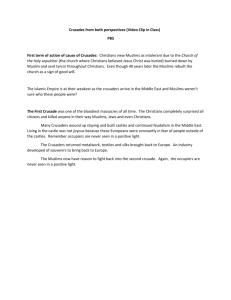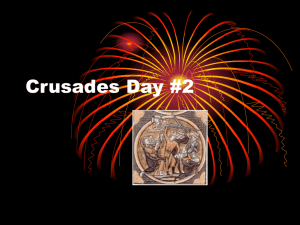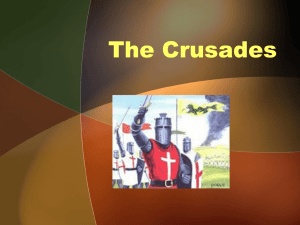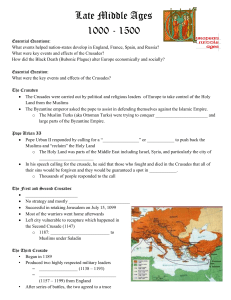Ch. 14, Sec. 1 Q&A
advertisement
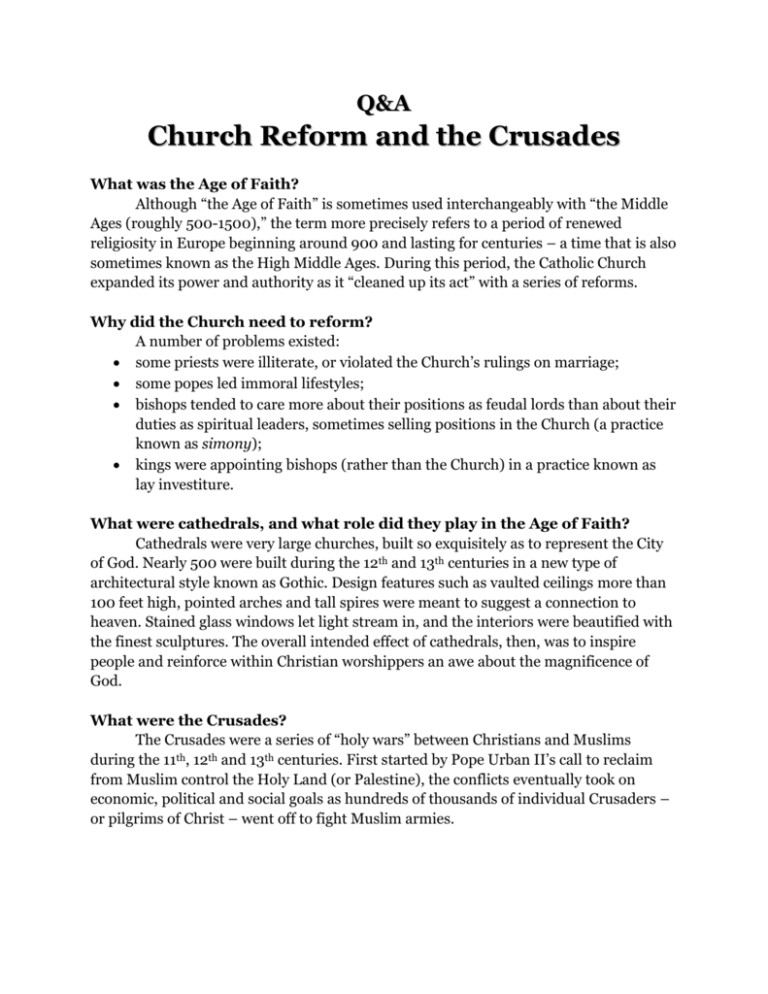
Q&A Church Reform and the Crusades What was the Age of Faith? Although “the Age of Faith” is sometimes used interchangeably with “the Middle Ages (roughly 500-1500),” the term more precisely refers to a period of renewed religiosity in Europe beginning around 900 and lasting for centuries – a time that is also sometimes known as the High Middle Ages. During this period, the Catholic Church expanded its power and authority as it “cleaned up its act” with a series of reforms. Why did the Church need to reform? A number of problems existed: some priests were illiterate, or violated the Church’s rulings on marriage; some popes led immoral lifestyles; bishops tended to care more about their positions as feudal lords than about their duties as spiritual leaders, sometimes selling positions in the Church (a practice known as simony); kings were appointing bishops (rather than the Church) in a practice known as lay investiture. What were cathedrals, and what role did they play in the Age of Faith? Cathedrals were very large churches, built so exquisitely as to represent the City of God. Nearly 500 were built during the 12th and 13th centuries in a new type of architectural style known as Gothic. Design features such as vaulted ceilings more than 100 feet high, pointed arches and tall spires were meant to suggest a connection to heaven. Stained glass windows let light stream in, and the interiors were beautified with the finest sculptures. The overall intended effect of cathedrals, then, was to inspire people and reinforce within Christian worshippers an awe about the magnificence of God. What were the Crusades? The Crusades were a series of “holy wars” between Christians and Muslims during the 11th, 12th and 13th centuries. First started by Pope Urban II’s call to reclaim from Muslim control the Holy Land (or Palestine), the conflicts eventually took on economic, political and social goals as hundreds of thousands of individual Crusaders – or pilgrims of Christ – went off to fight Muslim armies. Why did the Crusades come to an end? Over time, the general lack of success diminished the religious spirit of European Crusaders. The desire for personal gain came to replace the Crusading spirit. What was involved in the Spanish Crusade? The Spanish Crusade refers to Spain’s attempts during the late-1400s, under the reign of monarchs Ferdinand and Isabella, to strengthen Catholicism and eliminate rival religions from its borders. In the Reconquista, Spain was finally able to drive out the last of the Muslim presence from the Iberian Peninsula in the very year – 1492 – that Columbus discovered the New World. Also in that year, all practicing Jews were expelled from the country. As part of the Inquisition, Jews and Muslims who had converted to Christianity but were suspected of still harboring some of their former beliefs were questioned for weeks and often tortured or put to death in horrible ways. What were the effects of the Crusades? The effects of the Crusades were numerous: For women, it created opportunities – while their husbands were off to fight Muslims – to take on new roles traditionally handled by men: managing the affairs of an estate or running shops or inns. Trade in imported items like spices, fruits and cloth reconnected Europe with the global economies of the Mediterranean basin and Southwest Asia, and new knowledge was passed from Muslim scholars to Europeans. Jews faced increased persecution. Kings increased their power at the expense of feudal nobility and the pope in Rome. The Byzantine Empire finally collapsed with the fall of Constantinople in 1453. Animosity between Christians and Muslims was raised to such heights as to remain to the present day.
